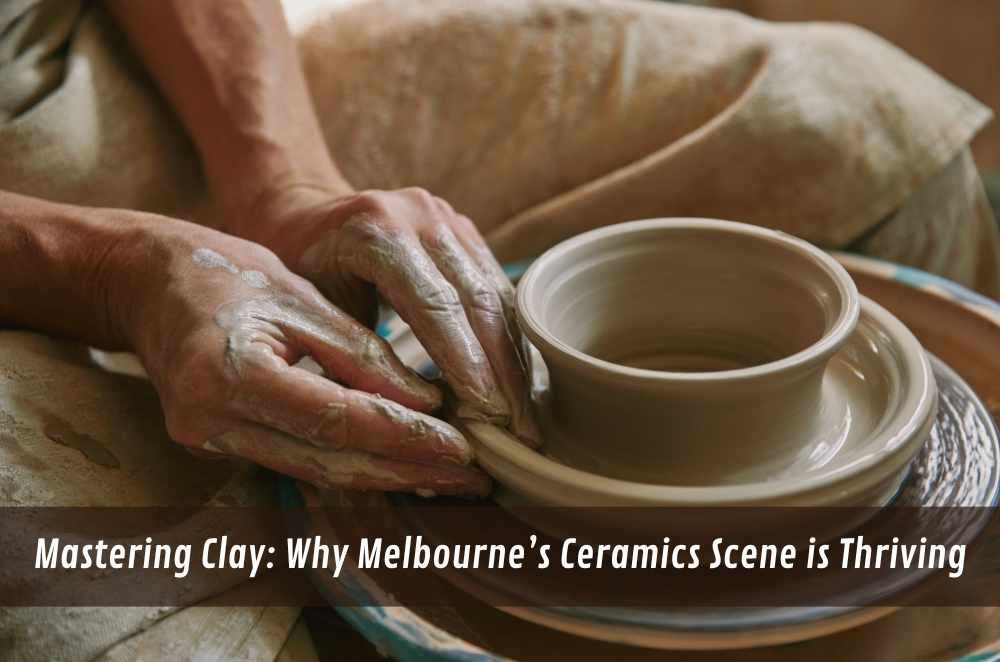
When most people hear the words "ceramics course," they think of dirty hands and whirling wheels—not therapy or mindfulness. But throughout Melbourne, pottery is increasingly one of the most grounding, mentally soothing hobbies people seek out. And it's not hard to see why.
Between the pressures of contemporary life and the pressure towards digital everything, we're longing for real-life, hands-on experiences. Ceramics does it all: It's creative, tactile, meditative, and—let's be honest—pretty addictive once you start.
In fact, over the past year, I’ve noticed more and more people—from uni students to retirees—booking into a pottery class in Melbourne for reasons that go way beyond making bowls.
Why ceramics feel so good (and science agrees)
There's something almost primitive about shaping clay between your fingers. It gets you in the here and now like few things can. And as it turns out, there's a scientific reason why that feels so soothing.
Art therapy and neuropsychology studies have found that repetitive motion tasks with full sensory input, including wedging, pinching, and wheel throwing, can decrease cortisol (the stress hormone) and boost dopamine (the happiness one).
From experience with students, particularly beginners, the energy shift is immediate. A client of mine once said, "I arrived with a splitting headache and left completely relaxed." No technology. No chatter. Just clay.
Why it works:
Hands-on focus: Keeps your brain from spiralling into overthinking
Creative release: A safe space to make mistakes and express yourselfPhysical grounding: Touch and motion reconnect you to your body
Sense of progress: Watching your skills grow week by week is deeply satisfying
Melbourne’s pottery scene: More than just a trend
Melbourne has always been a center for creative communities, but the ceramics wave is different. It's not about art—it's about connection, confidence, and healing.
Studios such as Diana Ceramic in Northcote are recording record levels of enrolments, not only for casual classes but long courses and memberships. And these aren't all would-be artists—there are many healthcare workers, parents, and full-time professionals searching for something more.
I had a student recently—a young paramedic—who signed up for an eight-week course. Halfway through, she said, “This is the first time I’ve felt my nervous system relax all week.” That stuck with me.
If you're curious about discovering the positive impact of ceramics, check out this article.
What makes Melbourne’s scene unique?
Inclusive studios: Welcoming to total beginners, NDIS participants, and all age groups
Teacher diversity: From ceramicists to art therapists, a wide range of backgrounds
Access to quality: Great clay, glazes, and kilns—you’re learning with the real deal
Community vibe: Small group sizes and lots of shared laughs
The link between ceramics and mental health
Mental health practitioners are beginning to recognize the strength of creative activities. Clay work has been quietly integrated into trauma therapy and psychiatric treatment for decades. But now, it's available in community studios and neighborhood workshops.
The Australian Government, through programs such as Arts Education Funding Australia, is becoming more aware of the place of the arts in community health. Grants and assistance programs have contributed to increased arts access in public areas, schools, and even aged care. Let's be honest—traditional therapy isn't for everyone. For individuals who are experiencing burnout, anxiety, or a change in their lives, something like ceramics can seem more accessible. Less talking, more doing.
Key mental health benefits of ceramics:
Emotional release: Letting go of perfection and embracing play
Safe expression: Visual art bypasses verbal barriers
Improved focus: Engaging multiple senses can ease overthinking
Social inclusion: Classes can be quietly communal or deeply bonding
What to expect from your first class
If you’ve never touched clay before, don’t stress—it’s not a test. Most studios are super beginner-friendly, and you’ll probably be surprised how quickly you fall into the rhythm.
Expect a bit of a mess, a few laughs, and (most likely) something wonky but wonderful to take home. From hand-building techniques to wheel throwing, you’ll be guided step-by-step, and no two classes are ever the same.
Here’s what I usually tell first-timers:
Pro tips for your first ceramics session:
Wear comfy, clay-friendly clothes (and closed-toe shoes)
Leave perfection at the door—wobbly is part of the charm
Trust the process—your hands know more than you think
Ask questions—teachers love helping troubleshoot
From my experience teaching, the best students aren’t the most “artistic”—they’re the ones who stay curious, try weird ideas, and laugh when their mug turns into a sculpture.

Making it part of your life
After one session, you might be addicted. Some students start casually and end up taking full-term courses or even buying their equipment to use at home. Others adopt the community model, taking open studios to work in a communal setting.
If you’re looking to expand your creative horizons, consider pairing your ceramics course with something like creative workshops in Melbourne
And to delve further into this reason why clay speaks to people, read this contemplative article on the benefits of learning ceramics through a mindfulness and arts therapy lens.
Final thoughts: The clay effect
Taking a ceramics course in Melbourne might not fix everything, but it can be a powerful shift. A pause. A way to reconnect with yourself and others. Whether you’re chasing calm, creativity, or just a break from the screen, clay has something to offer. And hey, at the very least, you’ll walk away with a handmade bowl and a newfound respect for your own two hands.






Write a comment ...